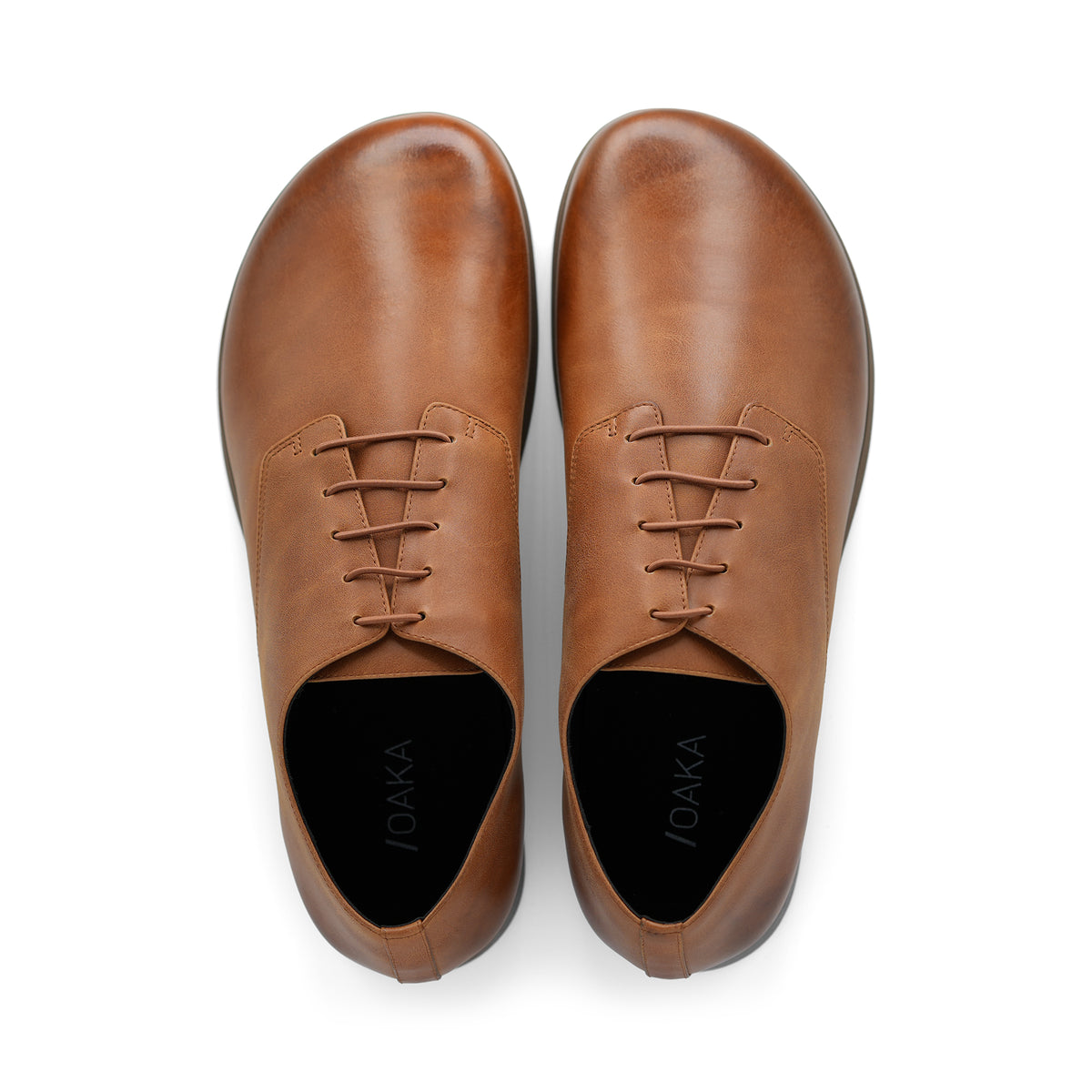Are foot stretches the answer to pain and immobility? This guide dives into easy and effective foot stretching techniques, designed to alleviate discomfort, improve flexibility, and fend off injury. Without requiring any special equipment, these stretches are quick to learn, simple to perform, and beneficial for anyone looking to maintain or improve foot health.
Key Takeaways
-
Regular foot and calf stretches improve overall foot health, increase flexibility, and reduce pain, with specific exercises that can be performed anytime without special equipment.
-
Targeted stretches for conditions like plantar fasciitis, toe arthritis, and foot arthritis are crucial for effective pain management and improved foot function, alongside general preventive exercises for long-term foot care.
-
It’s essential to warm up before stretching and to listen to your body’s signals during exercises to prevent injury, with a recommendation to seek professional help if faced with persistent pain, limited mobility, or severe inflammation.
Foot Flexibility and Pain Relief: The Basics
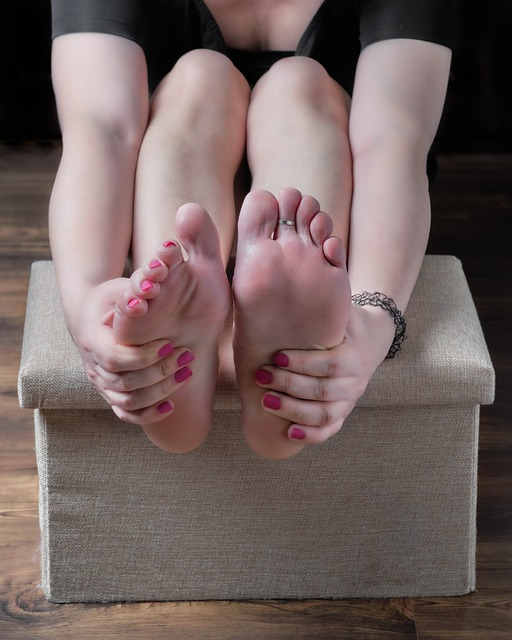
The key to unlocking a pain-free experience for your soles lies in the commitment to regularly nurture your foot and ankle health. Why? Because this simple act eases existing discomforts, thwarts potential aches, and fortifies your feet against future injuries. The best stretches for your feet are ones that you can seamlessly weave into your daily life, strengthening and rendering your feet more pliable with every gentle extension. It’s all about the slow and steady; beginning with gentle stretching exercises, you can incrementally build up to more intense routines, ensuring those new to the practice are safeguarded from injury.
And let’s talk specifics: targeting the muscles in the soles of your feet isn’t just a feel-good exercise—it’s a strategic move to enhance their flexibility, thereby reducing foot pain and increasing your range of motion. This newfound agility will keep you active and mobile, allowing you to step lively into whatever adventures await with your feet flat on the ground. Plus, you won’t need any fancy equipment for these exercises; they can be done practically anywhere, from the comfort of your home to a quiet corner at the gym.
Achilles Tendon
A tailored approach is crucial when dealing with the Achilles tendon, the unsung hero of lower leg mobility. The calf muscles, if tight, can exert undue strain on the Achilles tendon, potentially leading to pain and injury. To circumvent this, incorporating calf stretches like the gastrocnemius and soleus stretch into your routine can indirectly alleviate tension in this critical tendon. These movements, the former with a straight back leg and the latter with a bent knee, are like a balm to the overworked tendon, providing much-needed relief.
However, the focus isn’t solely on stretching; strengthening exercises are also imperative. Eccentric heel raises and leg press heel raises, when performed consistently and under professional guidance, can bolster calf muscles, thereby easing the burden on the Achilles tendon. Keep in mind that recovery from Achilles tendon issues is a marathon, not a sprint, potentially taking 3 to 6 months for a full recovery. Throughout this period, it becomes necessary to abstain from activities such as uphill sprints and jumps that may worsen the condition, while also wearing appropriate footwear to support your recovery.
And remember, if you’re grappling with Achilles tendon concerns, approach exercises like standing heel raises with caution, or better yet, seek medical advice before engaging in them.
Essential Stretches for Healthy Feet
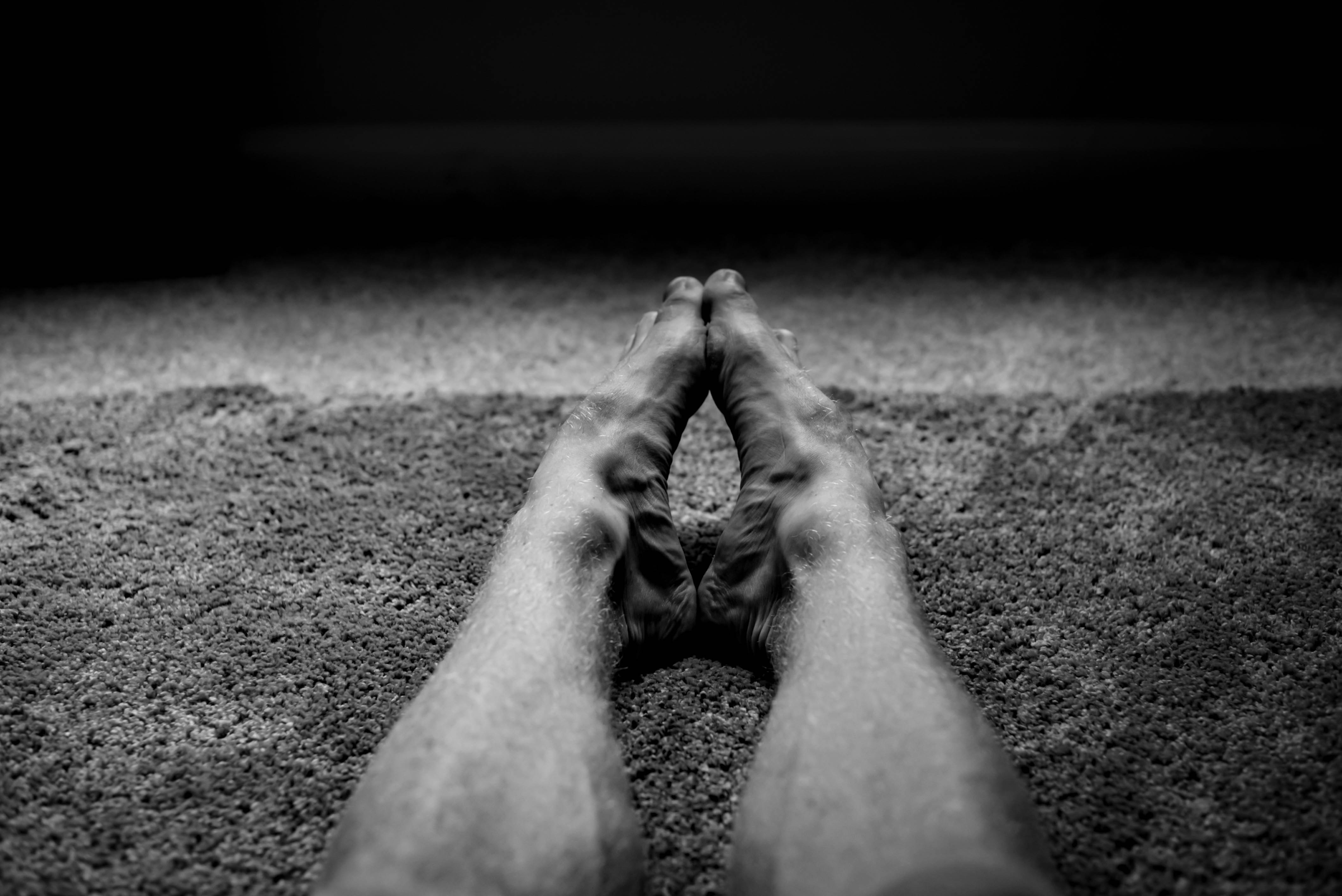
On the journey towards healthier feet, we come across numerous vital stretches that act as fundamental building blocks for maintaining foot health. Here are some important stretches to incorporate into your routine:
-
Towel stretch: Loop a towel around the ball of your foot, gently pulling your toes towards you while keeping your knee straight. This stretch provides relief to both the Achilles tendon and plantar fascia.
-
Toe spread exercises: Spread your toes apart as wide as possible and hold for a few seconds. This helps improve flexibility and strength in the muscles of the foot.
-
Seated calf and hamstring stretch using a strap: Sit on the floor with your legs extended in front of you. Loop a strap around the ball of your foot and gently pull your leg towards you, feeling a stretch in your calf and hamstring. This stretch enhances blood flow and flexibility throughout the foot. Engaging in these stretches thrice daily can slow muscle deterioration and maintain a wide range of motion in the big toe, countering the adverse effects of tight shoes.
Indeed, the journey to healthier feet is lined with optimal stretches addressing the distinct requirements of each foot part. From ensuring toes remain nimble to keeping the arches supple, these targeted exercises are the building blocks of a robust foot stretching routine.
Standing Calf Stretch

A pillar of the stretching regime, the Standing Calf Stretch, serves as a preventative measure against foot, ankle, or leg injuries. This simple exercise involves:
-
Placing your hands on a wall at shoulder height
-
Stepping one foot in front of the other, ensuring the back leg, specifically the right leg, remains straight
-
As you bend the front knee towards the wall, a stretch unfurls along the calf muscle of the back leg—a sensation that signifies the strengthening and loosening of these pivotal muscles.
Regular practice of the runner’s stretch not only enhances the flexibility of your calves over time but also establishes a firm foundation for healthy feet.
Toe Spread and Extension
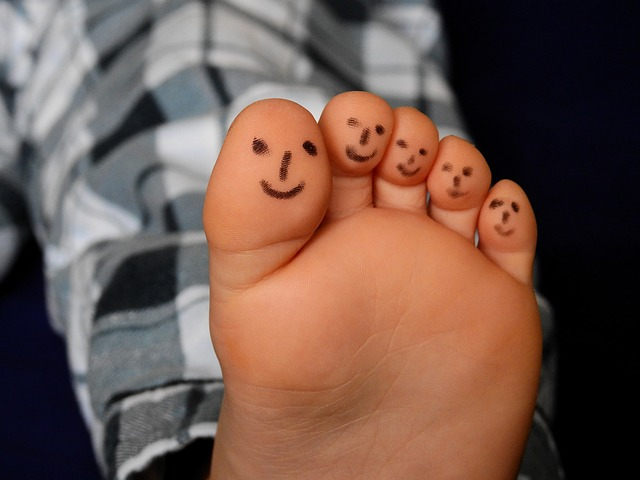
Diving deeper into the realm of foot flexibility, the Toe Spread and Extension exercises emerge as champions for toe health. These movements, including toes pointing, are instrumental in reducing inflammation and granting you greater control over your toe muscles. Specifically, the big toe stretch is key to alleviating tightness and enhancing the range of motion, an essential counteraction to the confining nature of modern footwear.
By regularly indulging your toes in these liberating exercises, you’re setting the stage for a life with less foot pain and greater ease in movement.
Seated Hamstring and Ankle Stretch
Transitioning to the Seated Hamstring and Ankle Stretch, we target the back of the lower leg and the hamstrings. This stretch not only aids in foot flexibility but also brings relief to those pesky aches. Starting with the basic form that zeroes in on the hamstring muscles, extending the leg and flexing the ankle during this stretch adds a beneficial twist for the calf muscles and Achilles tendon.
For an enhanced experience, a towel can pull the foot back, offering an even deeper stretch in the calf muscle—which, in turn, supports the health of the plantar fascia.
Targeted Foot Stretches for Specific Conditions
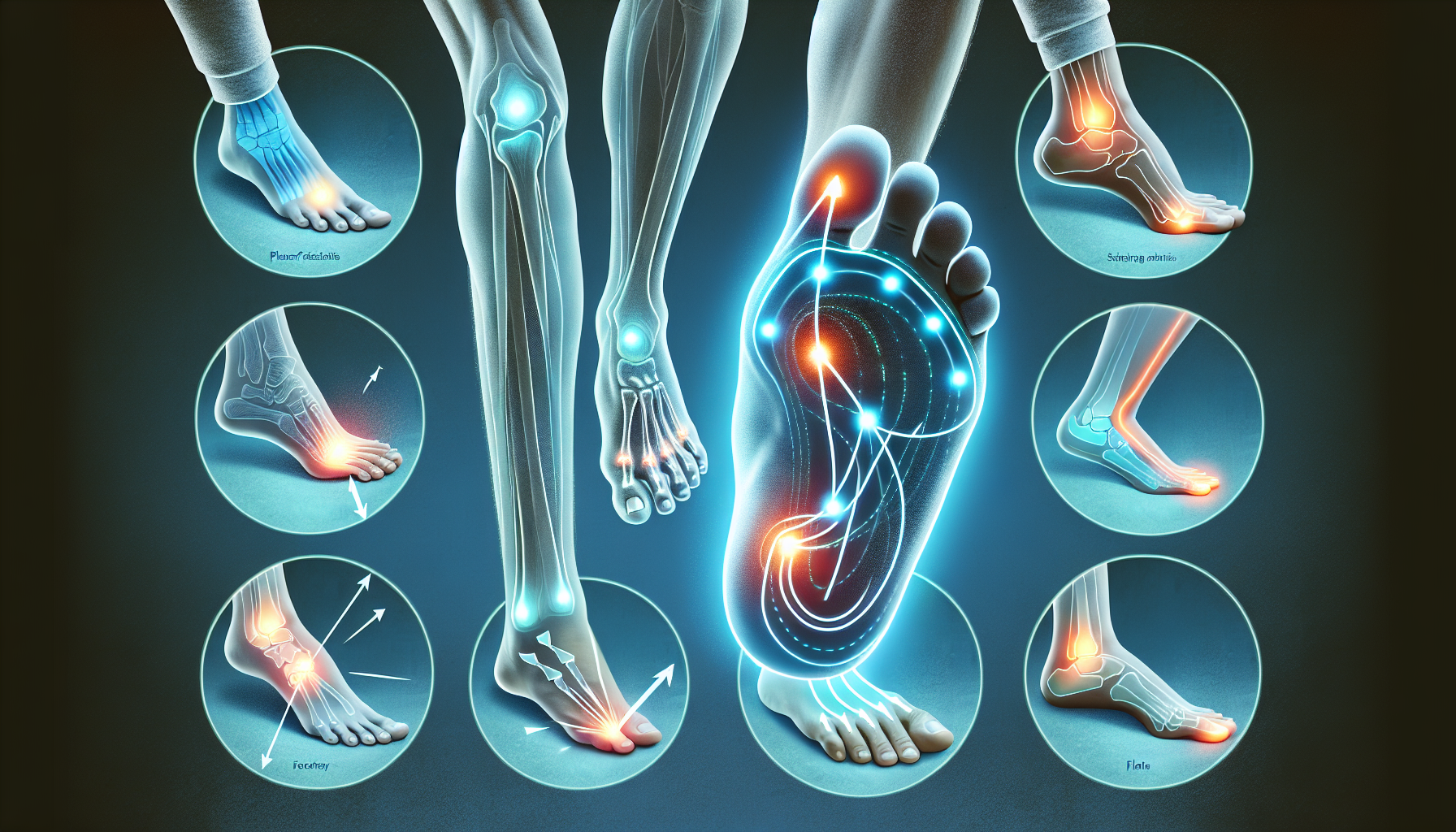
Upon the emergence of specific foot ailments, one should resort to targeted stretches that deal directly with the source of discomfort. For those battling the discomforts of plantar fasciitis, a regimen that includes the tennis ball roll exercise, towel stretches, and calf stretching can provide a much-needed reprieve. If toe arthritis is the culprit, toe pulls, big toe extensions, and toe salutes come to the rescue, easing the strain on the joints.
And for those wrestling with foot arthritis, daily incorporation of toe spread exercises and balancing exercises can be a game-changer in managing pain. Lastly, those with flat feet or fallen arches might find solace in toe curls and marble pickups, which strive to balance and correct hyper-pronation. Customizing your stretching routine to cater to your particular needs isn’t merely beneficial—it’s indispensable for effective pain management and prime foot health.
Plantar Fascia Roll
One of the most targeted techniques for those suffering from plantar fasciitis is the Plantar Fascia Roll. This exercise involves:
-
Rolling an object, such as a golf ball, gently underfoot to apply pressure to the plantar fascia
-
Relieving discomfort and tightness in the arch
-
Assisting with the specific pain associated with plantar fasciitis.
Regularly indulging in this exercise can contribute to greater flexibility in the left foot, a notable reduction in pain in the other foot, and improved strength in the right foot.
Sitting Plantar Fascia Stretch
Similarly, the Sitting Plantar Fascia Stretch is a targeted maneuver designed to combat the discomforts of plantar fasciitis. Here’s how to do it:
-
Sit down.
-
Cross one foot over the opposite knee.
-
Gently pull the toes back towards the body.
-
Hold the stretch for about 15-20 seconds.
-
Repeat the stretch three times for maximum effect.
This stretch can soothe the irritated area and promote healing.
Ankle Range of Motion and Rotation
In addition to the plantar fascia, focusing on ankle mobility and strength is crucial for preventing ankle pain. The alphabet exercise, where you simulate writing each letter with your big toe, can significantly relieve muscle and tendon tension on the top of the foot while seated.
Ankle dorsiflexion and plantarflexion exercises, along with ankle rotations, not only enhance the ankle’s range of motion but also support those with foot arthritis through slow, deliberate movements that strengthen and stabilize.
Techniques to Enhance Foot Stretching
Moving beyond the basic practices, numerous techniques exist that can elevate your foot stretching routine. Here are some techniques to consider:
-
Use props like towels or resistance bands to transform traditional stretches into deeper, more effective exercises.
-
Use foam rollers for massaging and stretching the plantar fascia.
-
Use tennis balls to pinpoint specific areas on the foot.
-
Try dynamic stretching, which involves continuous movements, to improve mobility.
-
Consider proprioceptive neuromuscular facilitation (PNF) techniques, which involve resistance followed by further stretching, to deepen the stretches and increase foot flexibility.
-
Customize the intensity of foot stretches by adjusting the angle and duration to tailor the practice to your individual needs.
Incorporating these sophisticated techniques guarantees a dynamic and adaptive foot stretching routine that caters to your body’s changing demands.
Ice Massage
Amidst the various techniques to enhance foot stretching, ice massage stands out as a particularly soothing option. The cold not only stretches out the fascia but also massages it, providing a calming effect that can alleviate foot pain.
Utilizing a frozen water bottle or a frozen can as tools for rolling under the foot while keeping it flat on the floor allows for a massaging action that stretches the fascia and helps reduce inflammation.
Walking on Sand
Another method to enhance foot health is walking on sand. The soft texture of sand requires more effort from the foot muscles, which in turn stretches and strengthens them. This type of walking can lead to a reduction in pain and inflammation in the feet and calves as these muscles become more robust and resilient.
Tips for Proper Foot Stretching
Precise foot stretching is a blend of art and science, demanding meticulousness to guarantee its effectiveness. Here are some tips to ensure you stretch your feet properly:
-
Warm up your muscles before stretching to prevent strain or injury. Simple activities like marching in place can prepare your muscles for the stretches ahead.
-
Start with a small number of repetitions and build up gradually to avoid foot pain. Increase the number of repetitions every few days, aiming for 2 sets of 15 repetitions as your ultimate goal.
-
After completing your foot stretches, do a seated hamstring stretch as a cooling-down exercise. This will offer muscle tension relief and reduce stress.
Consistency and regularity form the foundation of any successful stretching routine. Here are some tips to help you get started:
-
Begin with a gentle seated calf stretch.
-
Progress to standing lunging wall stretches for a deeper effect.
-
Use modifications like straps or adjusting the depth of your hip hinge to cater to varying fitness and flexibility needs during the seated hamstring stretch.
-
Hold passive stretches for around 20 seconds, performed in sets of 2-5, with short rests in between.
Following these tips will help optimize your stretching experience, ensuring your leg straight posture is maintained.
Warm-up and Cool-down
Before diving into foot stretches, a proper warm-up is essential. Marching in place serves as an effective warm-up, prepping the muscles for the stretching routine ahead and reducing the likelihood of injuries.
Similarly, cooling down with exercises like the seated hamstring stretch can provide crucial muscle tension relief after your stretching session.
Consistency and Frequency
Building a consistent and frequent stretching routine is vital. Starting with a gentle seated calf stretch and progressing to a more intensive standing lunging wall stretch can be effective in gradually increasing flexibility. Modifying the seated hamstring stretch with tools like a strap can accommodate different levels of flexibility and fitness.
Holding stretches for about 20 seconds over 2-5 sets, with short breaks between each, can help alleviate foot pain and improve flexibility.
Listening to Your Body
When it comes to stretching, one of the most crucial tips is to listen to your body’s signals. If sharp or sudden pain is experienced, it’s important to ease up immediately to prevent injury. If you’re dealing with arthritis and new joint pain arises during exercises, it’s wise to stop and consult a healthcare professional to avoid worsening inflammation. Keeping pain levels during exercises within a tolerable range ensures that you don’t push yourself into serious injury territory.
It’s normal for new exercises to cause some muscle pain as your body adjusts, but persistent or increasing pain is a signal to reduce the intensity of your exercises. Soreness the day after stretching might indicate that you’ve overstretched; in such cases, reduce the intensity of your stretching routine. While stretching may not significantly alter sore muscles, it can activate them, creating a psychological sense of soreness reduction.
Remember, flexibility tends to peak in the afternoon, so planning your stretching routine around this time can be beneficial.
Benefits of Regular Foot Stretches
The multitude of benefits that regular foot stretches incorporate into your life is diverse and profound. Not only do they significantly improve overall foot health, but they also dispel the tiredness that often plagues our ankles and feet. Those who make foot stretches a part of their routine may also notice:
-
A decrease in swelling in the feet and ankles, which is a boon for anyone who spends long hours on their feet
-
Improved flexibility and range of motion in the feet and ankles
-
Reduced risk of foot and ankle injuries
-
Relief from foot pain and discomfort
-
Improved circulation in the feet and lower legs
Incorporating foot stretches into your daily routine can have a positive impact on your overall well-being.
Moreover, these benefits extend beyond mere comfort. By reducing pain and inflammation through targeted exercises, like calf stretches and toe spread exercises, you set the stage for a more active and pain-free lifestyle. Regular strengthening exercises such as toe curls and marble pickups not only fortify the muscles in your feet but also lower the risk of injury, making them a staple in any foot care regimen.
Additionally, the use of corrective shoe inserts or custom orthotics can help to ensure proper foot alignment and distribute pressure evenly, effectively diminishing pain from various foot conditions.
Reduced Pain and Inflammation
A consistent routine of calf stretches not only improves short-term range of motion but also lowers the risk of strains, contributing to reduced pain and inflammation. Toe spread and extension exercises, practiced over an 8-week period, can lead to significant improvements in the alignment of the toes, reducing strain and inflammation in the toe joint.
Regular practice of toe curls and marble pickups can also help alleviate common foot ailments and lower injury risk by strengthening the muscles in the feet. Furthermore, the implementation of corrective shoe inserts or custom orthotics is effective in minimizing pain from various foot conditions by ensuring proper foot alignment and pressure distribution.
Increased Mobility and Flexibility
Consistently stretching your feet leads to greater flexibility, which in turn opens the door to better mobility. Calf stretching activates the muscles, stimulating blood flow, and easing muscle tightness or pain.
The seated hamstring stretch, when done regularly with knees bent, can increase flexibility and range of motion in the hamstrings, thus improving overall mobility in activities that involve bending and squatting.
Prevention of Injuries
The preventative aspect of regular foot stretching is invaluable, especially for those who lead active lifestyles. Building up strength and flexibility over time conditions the feet and ankles, reducing the risk of injury. Being mindful of your terrain, such as avoiding uneven surfaces or excessive uphill running, helps prevent overstraining the feet and ankles. Reducing muscle imbalances and tension, particularly in the hamstrings, decreases the chances of strains and sprains. Some benefits of regular foot stretching include:
-
Increased flexibility
-
Improved balance and stability
-
Reduced muscle soreness and fatigue
-
Enhanced performance in physical activities
-
Decreased risk of foot and ankle injuries
By incorporating foot stretching into your routine, you can maintain healthy and strong feet, allowing you to continue enjoying your active lifestyle.
Toe circles and stretches for the top and bottom of the feet improve overall flexibility and aid in injury prevention. Strengthening exercises for the ankles and calves, like pressing against an exercise band or performing heel raises, are essential in lessening the likelihood of injuries. And not to be overlooked, wearing supportive footwear and replacing worn-down shoes in a timely manner serve as key preventive measures.
When to Seek Professional Help
Recognizing when to seek professional help for your foot health is just as vital as the stretches themselves. If you experience any of the following symptoms, it’s crucial to seek immediate medical attention:
-
Sudden or severe foot pain, especially after an injury
-
Persistent foot pain that worsens over a few days or interferes with daily activities
-
Persistent swelling and inflammation
-
Numbness or tingling sensations
-
Difficulty bearing weight or walking
Individuals with conditions like diabetes or arthritis, or those recovering from foot surgeries, should always seek advice from healthcare professionals before attempting new exercises.
Additionally, visible deformities, non-healing wounds, or changes in foot shape or alignment necessitate a podiatrist’s evaluation. Understanding these signals and responding accordingly can prevent further complications and ensure that your feet receive the care they need.
Persistent Pain
Persistent pain is a telltale signal that it’s time to consult a healthcare professional. If joint pain in the toes lingers for more than three days or if multiple episodes of joint symptoms occur within a single month, professional guidance is advised.
Moreover, if foot pain persists despite proper rest and self-care, seeking medical attention is essential to prevent further complications.
Limited Mobility
When limited mobility starts to affect your foot function, it’s a clear sign to seek medical advice. Difficulty in walking, bearing weight on the affected foot, or pain and stiffness that limit joint movement are all indicators that professional evaluation is necessary.
Severe Inflammation
Severe inflammation that persists even after rest, elevation, or home treatments is a concern that requires medical assessment. If joints in the foot become red, warm, or tender and don’t respond to rest, ice, or over-the-counter medications, it’s time to seek a healthcare provider’s attention.
Additionally, if swelling doesn’t improve after 2 to 5 days of home treatment or you have an open wound or one that oozes pus, a professional medical assessment is advised.
Summary
In the pursuit of healthy feet, incorporating the stretches and exercises outlined here can transform discomfort into comfort and immobility into graceful movement. By understanding the basics of foot flexibility and pain relief, targeting specific conditions, enhancing your stretching techniques, and heeding the tips for proper stretching, you can reap the myriad benefits of regular foot stretches. And, when necessary, knowing when to seek professional help will ensure your feet remain in good hands. Step forward with confidence, knowing you have the tools to maintain healthy, happy feet.
Frequently Asked Questions
How do you stretch out your feet?
To stretch out your feet, you can try exercises like pulling your toes up toward the ankle while sitting in a chair for 10 seconds, repeating 10 times on each foot. Additionally, you can stand with feet together, step back with one leg and hold for 20 to 30 seconds to stretch the muscles on the bottom of your feet and toes.
How do you loosen tight tendons in your foot?
To loosen tight tendons in your foot, sit in a chair, place your lower calf on your opposite thigh, and gently stretch your big toe in different directions for 5 seconds, repeating 8-10 times on each side.
Should I stretch my foot if it hurts?
Yes, stretching your foot can help ease the pain and increase flexibility, especially if you are experiencing tightness or plantar fasciitis.
How often should I perform foot stretches to see improvement?
Perform foot stretches at least three times a day to maintain foot health and improve flexibility. This regular routine can help you see improvement in your foot health.
Can foot stretches alleviate severe plantar fasciitis?
Yes, targeted foot stretches can offer significant relief from plantar fasciitis pain, including the plantar fascia roll and seated plantar fascia stretch.
_____________
P.S. Try OAKA, our barefoot Derby style dress shoe that strengthens your feet and provides all day comfort.
---
Michael Plater is an authority on barefoot shoes, having spent years reviewing and testing products as well as modifying and ripping out soles to find the healthiest options.
